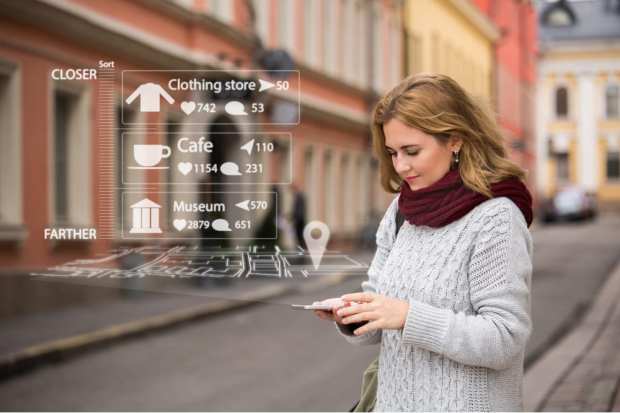Augmented Reality Gets Retail Boost From Snapchat And Google

The profile of augmented reality (AR) keeps rising in retail, and the latest evidence of the technology’s promise and popularity comes from Snapchat.
In its second-quarter 2019 earnings report this week (July 23), Snapchat parent Snap described its own AR progress – which could serve as at least a small signal of further and broader AR developments when it comes to mobile commerce and the innovative retail opportunities that can stem from that.
“We recently launched the next generation of AR lenses that use deep neural networks to modify a person’s appearance in real time, and over 200 million Snapchatters played with these new lenses in the first two weeks,” the company said. Indeed, “the number of Snapchatters submitting new lenses through Lens Studio every month grew by more than 20 percent from the prior quarter,” Snap said. As well, “we saw more engagement with lenses created by our community in Q2 2019 than the entirety of 2018.”
Visual Retail
In general, retail is getting more visible and following changes in consumer behavior, and that is opening up even more ground for further use of augmented reality. According to one recent report, augmented reality “has lots of implications for local commerce. Despite the outsized attention that eCommerce gets, 90+ percent of retail spending happens locally in physical stores. AR can fit right into that common activity as an extension of smartphone-assisted shopping.”
Via such tools as Google Lens, AR “could grow into a true utility for contextualizing commerce-heavy items – everything from local storefronts to restaurant menus to shoes you see on the street,” the report stated.
That’s not the only way AR could help local merchants and service providers reach more consumers. “AR comes into play in another key local commerce category: home services. Innovators like Streem are bringing remote assistance to traditional service calls (think busted pipe). The vision is essentially to let homeowners be the eyes and ears of a remote pro, via their upheld smartphone. By giving pros that telepresence to diagnose that busted pipe, they can gain operational efficiencies such as scoping and pricing jobs from afar, thus reducing some of their drive time.”
AR is moving toward the retail mainstream as consumers continue to use their smartphones and other web-enabled devices to seek out local merchants. Some 82 percent of shoppers use their smartphones to conduct what are sometimes called “near me” searches, according to one account. “Google has said formally and informally at different points that ‘local intent’ search constitutes 30, 40 and even 50 percent of mobile queries,” that report said. “The current official number is 30 percent.”
Both AR and VR – but particularly virtual reality – could help create more intense consumer experiences, which is among the biggest pushes in the world of digital commerce today. A new PYMNTS research report, Virtual Reality in Retail, provides more detail about the promise of the technology. By 2022, the report says, VR will generate $1.8 billion in retail and marketing spend, with revenue from VR retail initiatives expected to increase by 3,000 percent over the next four years.
Google AR
Meanwhile, Google has recently launched AR Beauty Try-On, which allows viewers to virtually try on makeup while following tips, product reviews and more from YouTube creators.
The tech giant has developed AR tools to help creators build more immersive experiences for their products. This latest innovation utilizes machine learning and AR technology to offer realistic, virtual product samples that work on a full range of skin tones. Currently in alpha, AR Beauty Try-On is available through FameBit by YouTube, Google’s in-house branded content platform. MAC Cosmetics is the first brand to partner with FameBit to launch an AR Beauty Try-On campaign.
As these efforts from Snap, Google and others show, augmented reality’s future in retail is getting much brighter.
